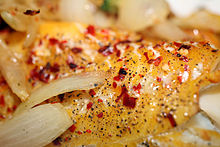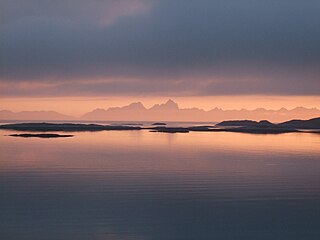
The Norwegian Sea is a marginal sea, grouped with either the Atlantic Ocean or the Arctic Ocean, northwest of Norway between the North Sea and the Greenland Sea, adjoining the Barents Sea to the northeast. In the southwest, it is separated from the Atlantic Ocean by a submarine ridge running between Iceland and the Faroe Islands. To the north, the Jan Mayen Ridge separates it from the Greenland Sea.

Cod is the common name for the demersal fish genus Gadus, belonging to the family Gadidae. Cod is also used as part of the common name for a number of other fish species, and one species that belongs to genus Gadus is commonly not called cod.

The Atlantic cod is a fish of the family Gadidae, widely consumed by humans. It is also commercially known as cod or codling. Dry cod may be prepared as unsalted stockfish, and as cured salt cod or clipfish.

Whitefish or white fish is a fisheries term for several species of demersal fish with fins, particularly Atlantic cod, whiting, haddock, hake (Urophycis), and pollock (Pollachius), among others. Whitefish (Coregonidae) is also the name of several species of Atlantic freshwater fish.
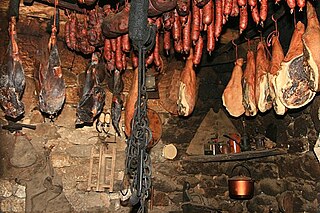
Smoked meat is the result of a method of preparing red meat, white meat, and seafood which originated in the Paleolithic Era. Smoking adds flavor, improves the appearance of meat through the Maillard reaction, and when combined with curing it preserves the meat. When meat is cured then cold-smoked, the smoke adds phenols and other chemicals that have an antimicrobial effect on the meat. Hot smoking has less impact on preservation and is primarily used for taste and to slow-cook the meat. Interest in barbecue and smoking is on the rise worldwide.

The Arbroath smokie is a type of smoked haddock, and is a speciality of the town of Arbroath in Angus, Scotland.
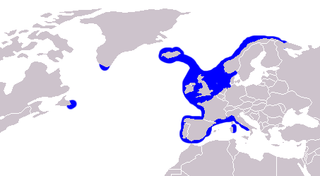
The common ling, also known as the white ling or simply the ling, is a large member of the family Lotidae, a group of cod-like fishes. It resembles the related rocklings, but it is much larger and has a single barbel. This species is unrelated to the pink ling, Genypterus blacodes, from the Southern Hemisphere. The common ling is found in the northern Atlantic, mainly off Europe, and into the Mediterranean Basin. It is an important quarry species for fisheries, especially in the northeastern Atlantic, although some doubts exist as to the sustainability of the fisheries. As an edible species, it is eaten fresh, frozen, or dried, but also preserved in lye, while the roe is a delicacy in Spain.

Smoked fish is fish that has been cured by smoking. Foods have been smoked by humans throughout history. Originally this was done as a preservative. In more recent times fish is readily preserved by refrigeration and freezing and the smoking of fish is generally done for the unique taste and flavour imparted by the smoking process.

The cusk or tusk is a North Atlantic cod-like fish in the ling family Lotidae. It is the only species in the genus Brosme. Its other common names include European cusk, and brosmius.

The saithe is a species of marine fish in the genus Pollachius. Together with P. pollachius, it is generally referred to in the United States as pollock. Other names include the Boston blue, coalfish/coley, and saithe in the UK, where the young fish are called podleys in Scotland and northern England.

The fishing industry in Scotland comprises a significant proportion of the United Kingdom fishing industry. A recent inquiry by the Royal Society of Edinburgh found fishing to be of much greater social, economic and cultural importance to Scotland than it is relative to the rest of the UK. Scotland has just 8.4 per cent of the UK population but lands at its ports over 60 per cent of the total catch in the UK.
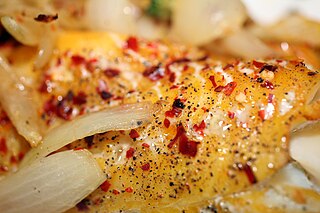
Finnan haddie is cold-smoked haddock, representative of a regional method of smoking with green wood and peat in north-east Scotland.

Cured fish is fish which has been cured by subjecting it to fermentation, pickling, smoking, or some combination of these before it is eaten. These food preservation processes can include adding salt, nitrates, nitrite or sugar, can involve smoking and flavoring the fish, and may include cooking it. The earliest form of curing fish was dehydration. Other methods, such as smoking fish or salt-curing also go back for thousands of years. The term "cure" is derived from the Latin curare, meaning to take care of. It was first recorded in reference to fish in 1743.
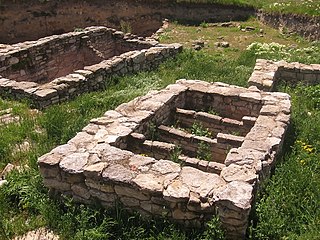
Fish preservation is the method of increasing the shelf life of fish and other fish products by applying the principles of different branches of science in order to keep the fish, after it has landed, in a condition wholesome and fit for human consumption. Ancient methods of preserving fish included drying, salting, pickling and smoking. All of these techniques are still used today but the more modern techniques of freezing and canning have taken on a large importance.

The blue whiting one of the two species in the genus Micromesistius in the family Gadidae, which also contains cod, haddock, whiting, and pollock. It is common in the northeast Atlantic Ocean from Morocco to Iceland and Spitsbergen. It also occurs in the northern parts of the Mediterranean, where it may be locally abundant. Blue whiting also occur in the northwest Atlantic Ocean between Canada and Greenland, but is considered rare. It has a long, narrow body and a silvery underbody. The fish can attain a length of more than 40 cm. The average length of blue whiting caught off the west shores of the UK is 31 cm.

Cod fisheries are fisheries for cod. Cod is the common name for fish of the genus Gadus, belonging to the family Gadidae, and this article is confined to three species that belong to this genus: the Atlantic cod, the Pacific cod and the Greenland cod. Although there is a fourth species of the cod genus Gadus, Alaska pollock, it is commonly not called cod and therefore currently not covered here.
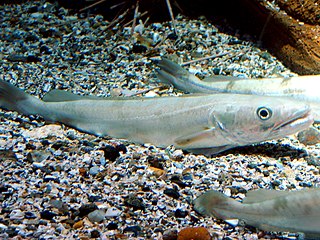
Merluccius merluccius, the European hake, is a merluccid hake of the genus Merluccius. Other vernacular names include Cornish salmon and herring hake. It is a predatory species which was often netted alongside one of its favoured prey, the Atlantic herring, thus the latter common name. It is found in the eastern Atlantic from the Norway and Iceland south to Mauritania and into the Mediterranean Sea. It is an important species in European fisheries and is heavily exploited with some populations thought to be being fished unsustainably.

Cod and other cod-like fish have been widely used as food through history. Other cod-like fish come from the same family (Gadidae) that cod belong to, such as haddock, pollock, and whiting.

Trachyrincus scabrus, the roughsnout grenadier or Mediterranean longsnout grenadier, is a species of bathydemersal marine fish from the subfamily Trachyrincinae, part of the family Macrouridae. It is found in the eastern Atlantic Ocean and the Mediterranean.
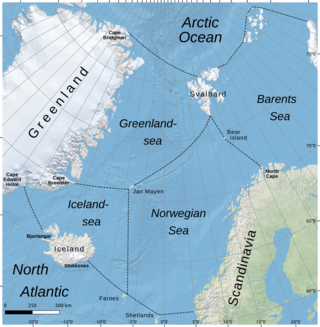
The Iceland Sea, a relatively small body of water, is bounded by Iceland. It is characterized by its proximity to the Mid-Atlantic Ridge, which transforms into the Kolbeinsey Ridge, and the Greenland-Scotland Ridge, and it lies just south of the Arctic Circle. This region is typically delineated by Greenland to the west, the Denmark Strait, and the continental shelf break south of Iceland to the south. Next in the boundary line are Jan Mayen, being a small Norwegian volcanic island, and the Jan Mayen Fracture Zone to the north, with the Jan Mayen Ridge to the east of the sea. This ridge serves as the northern boundary of the Iceland Sea, acting as the dividing line from the Greenland Sea. To the immediate south of Jan Mayen, the Iceland-Jan Mayen Ridge stretches towards the Iceland-Faroe Ridge, creating a boundary between the Iceland Sea and the Norwegian Sea to the east.






